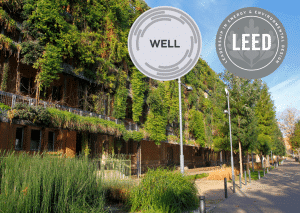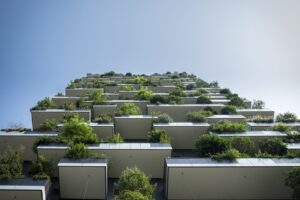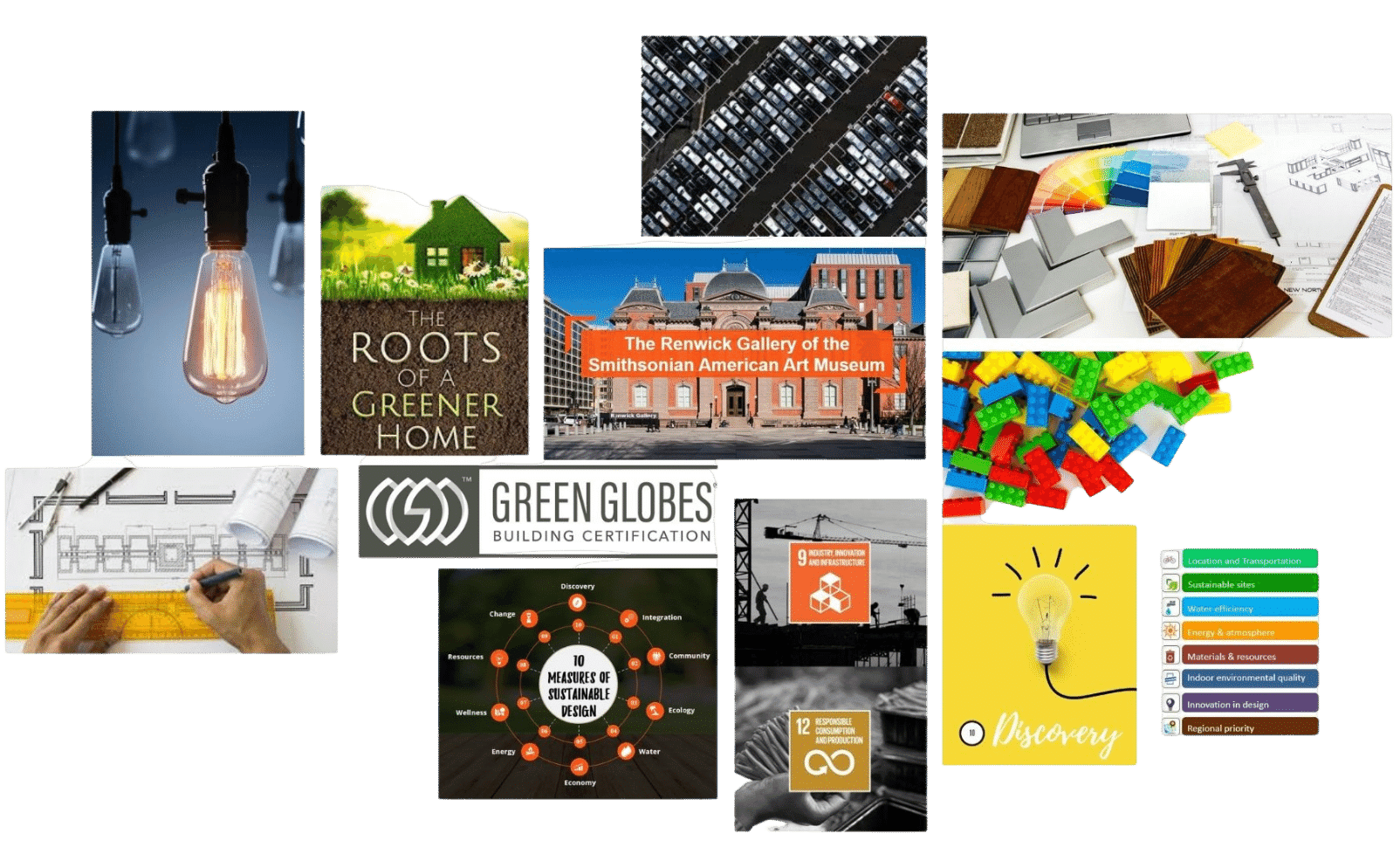We all are aware that buildings have a massive environmental impact. And apart from the environment, they affect the health of their inhabitants too. Right from the time of construction and throughout their lifecycle, buildings use a huge amount of our limited resources and generate a lot of waste.
As the awareness on this aspect of the construction industry is spreading, people are opting for buildings that are ‘green’. A ‘green’ building is a building that minimizes or eliminates negative aspects and has the ability to create positive impacts on our natural environment through its design, construction and operation. In other words, green buildings preserve precious natural resources and improve our quality of life.
Now LEED is one of the most popular green building certification programs worldwide designed by the U.S. Green Building Council that affirms that a building has incorporated sustainability throughout its lifecycle. It stands for Leadership in Energy and Environmental Design.
LEED is flexible enough to apply to all building types – commercial as well as residential. It works throughout the building life cycle and LEED for Neighborhood Development extends the benefits of LEED beyond the building footprint into the neighborhood it serves.
LEED Certification Levels
The U.S. Green Building Council’s LEED rating system currently has 4 LEED certification levels tailored to specific building types inclusive of new construction, renovation, and existing buildings.
Projects pursuing LEED certification earn points across several categories: energy savings, water efficiency, carbon emissions reduction, improved indoor environmental quality, innovation, location and transportation, sustainable sites, and stewardship of resources and sensitivity to their impacts.
Based on the number of points achieved, a project then earns one of four LEED rating levels: Certified, Silver, Gold or Platinum.
26 – 32 points earns basic LEED certification, 33 – 38 points earns a silver-level certification, 39 – 51 points earns gold-level certification and 52 points or higher earns platinum certification.
The LEED Platinum level certification achieves the highest honor and the LEED Certified level achieves basic, fundamental performance.
LEED Professional Exams
The LEED professional exams are administered by the Green Business Certification Inc. (GBCI) for professionals seeking to earn LEED credentials. The exams test knowledge based on the U.S. Green Building Council’s LEED Rating Systems.
A LEED credential denotes proficiency in today’s sustainable design, construction and operations standards. More than 203,000 professionals have earned a LEED credential to help advance their careers. There are three different levels in the LEED professional credentials program:
LEED Green Associate
The LEED Green Associate credential is for people who have a documented, up-to-date understanding of the most current green building principles and practices. This is basically a foundational credential, and for many it is the first step before earning advanced credentials such as the LEED AP with specialty.
Further Reading:
LEED AP with specialty
A LEED Accredited Professional (AP) credential signifies an advanced depth of knowledge of green building practices and by extension, an even greater commitment towards sustainable building. Earning a LEED AP credential requires specializing in a specific field. The specialization of LEED designation resembles the specialization of graduate school. To gain higher levels of mastery in a subject, one must specialize. You can specialize in each of the different rating systems of LEED that are listed below –
- LEED AP Building Design + Construction – This rating system includes guidelines for new buildings and old buildings undergoing major renovations.
- LEED AP Operations + Maintenance – This category can be used by building owners and operators to measure operations and maintenance as well as make minor improvements.
- LEED AP Interior Design + Construction – This rating system was designed specifically for tenants leasing a portion of a larger building.
- LEED AP Neighborhood Development – This category integrates the principles of smart growth, urbanism, and green building into the first national program for neighborhood design.
- LEED AP Homes – This was specifically designed for single and multi-family residential structures that are three stories or less.
Also Read: How to prepare for the LEED AP Exam
LEED Fellow
LEED Fellows are a highly distinguished class of individuals who are nominated by their peers and have a minimum of 10 or more years of professional green building experience. LEED Fellows must also have achieved a LEED AP with specialty credential.
What does LEED certification get you?
Becoming a LEED professional is a long-term investment not only in yourself, but also in the health of our shared planet as well as your broader community. The following points will clarify what exactly LEED accreditation will get you:
The demand for LEED professionals is growing.
The labor market for LEED professionals has already begun to experience tremendous growth. Currently we have over 100,000 professionals worldwide who have become LEED-APs, and the numbers are growing fast.
Your efforts will impact the environment positively.
LEED is the way to go if you are passionate about the environment and keen enough to do something to help save it. Now what can be better than following your passion which is also an excellent source of livelihood!
The labor demand for LEED professionals is unlimited.
Considering the enormous scale of the global built environment, how much work it will take to transform it, and how much value this transformation could have in solving global issues such as climate change, it’s easy to see how the labor demand for LEED professionals is potentially unlimited. Seen in these terms, the only factor limiting the growth in LEED jobs is really the will to actually transform our global built environment.
LEED professionals have skills that are in demand and are internationally marketable.
LEED is the only green building rating system that can claim to be truly global in its reach. As of 2016, there were nearly 80,000 projects participating in LEED across 162 countries, including more than 32,500 certified commercial projects. These numbers go on to show that individuals who choose to become LEED professionals are positioning themselves to remain competitive in an increasingly globalized economy by acquiring skills that are in demand and internationally marketable.
The importance of LEED is spreading globally.
LEED buildings have lower operating costs due to reduced energy consumption with the added benefit of being environment-friendly in terms of emissions. That is why the listing of cities nationwide requiring LEED on new construction continues to grow.
LEED certified buildings command higher tenant rates.
An increasing number of people across the world prefer living, shopping and working in LEED certified environments. Lower operating costs, benefits to the environment and increased productivity make it possible for LEED certified buildings to justifiably command a higher rent. And even as LEED certified buildings command higher tenant rates, about 92% of their space is occupied.
The built environment will play an important role in combating climate change, and LEED professionals are needed to support a reduction in building emissions and energy consumption.
Finally, many international climate watchers are cautiously optimistic that we are moving towards an achievable international framework for combating climate change. Due to the outsized role that the built environment plays in emitting greenhouse gases and the importance of reducing its global carbon footprint, it is clear that there can be no regulatory solution to climate change that does not include dramatic reductions in building emissions and energy consumption.
How to become a LEED Accredited Professional?
There are two ways to become a LEED accredited professional –
Take the Green Associate Exam and become a LEED Green Associate.
Identify your area of expertise and accordingly take the LEED AP exam to earn the LEED AP credential.
LEED Green Associate Exam Prep Course
The key to earning a LEED Green Associate credential is a thorough understanding of green building practices and LEED. You can now ace the LEED Green Associate Exam with GBRI’s best-in-class all inclusive exam prep. GBRI, or the Green Building Research Institute is a proud USGBC Education Partner and one of the leading sources for affordable LEED exam prep and training in the world.
With GBRI’s study materials, you can earn your LEED Green Associate credential in as little as 5 weeks. Based on your schedule, attend the 4 week instructor-led live exam prep sessions OR utilize self-paced online on-demand exam prep modules.
GBRI LEED Green Associate Exam Prep includes:
- A study guide,
- 5 LEED Green Associate practice tests with 100 questions (each simulated just like the actual exam),
- Flash cards,
- Memory charts,
- Section wise quiz questions and much more!
- The 5 practice tests -100 questions each are also available separately on their website for $99.
- What’s more, GBRI also offers student, military, group, small business and corporate discounts. Contact them at [email protected] for more information.
- The GBRI team is so confident you will pass your LEED exam by following their recommended roadmap that they are backing it up with a money back guarantee!
- Further, the LEED v4 Green Associate online modules are also available on their website and include:
- Study Guide
- Self-Paced Online Study Modules
- Flash Cards, Memory Charts & MP3 Voice Files
- Practice Tests (sold separately)
Interested in becoming a LEED Green Associate? Let GBRI help you take your career to the next level with your satisfaction guaranteed. Register Today!(Limited time offer! Save 25% now – coupon code LEEDGA25)
GBRI also specializes in In-Person Exam Preparation & Training.
Green Building Research Institute’s Certified Instructor Network spans the world and provides access to quality in-person training for your LEED Green Associate exam prep and sustainability education. Visit their website to view their locations and get yourself registered at a center near you.
For more information, visit: https://www.gbrionline.org
LEED AP Exam Prep Course
While pursuing the LEED AP program, it is very important to choose the credential that is in line with your field of work. As mentioned above, there are five different LEED AP courses available in which one can specialize – LEED AP Building Design + Construction (BD+C), LEED AP Operations + Maintenance (O+M), LEED AP Interior Design + Construction (ID+C), LEED AP Neighborhood Development (ND), LEED AP Homes.
There are excellent online courses available to aid in preparation for the LEED AP exams. GBRI offers all-inclusive LEED exam preparation courses for the LEED AP BD+C and O+M exams.
The courses come with several features to ensure best ways to pass the exam including:
- Study Guide and Online Modules
- Practice Exams containing over 500 practice questions accompanied by explanations, increasing understanding of required principles
- Live and on-demand access for a full year
- Flashcards & Memorization Charts
- Audio Files
- Reference and study materials
- Instant access
For more information, visit: https://www.gbrionline.org
GBRI’s LEED AP exam preparation programs include access to all LEED Green Associate study materials for students interested in taking the combined LEED Green Associate and LEED AP exam. GBRI LEED Exam Prep is taught in the context of a real LEED v4 project giving you the LEED project experience you need to ace the LEED v4 Green Associate and LEED AP Exam.
It should be noted that if you are LEED AP, you must earn 30 CE (Continuing Education) hours, out of which six must be LEED-specific, every two years to maintain your credential.
If you are a LEED Green Associate, you must earn 15 CE hours (three must be LEED-specific) every two years to maintain your credential.
With inputs from:
https://www.usgbc.org/articles/5-reasons-its-worth-it-become-leed-professional











